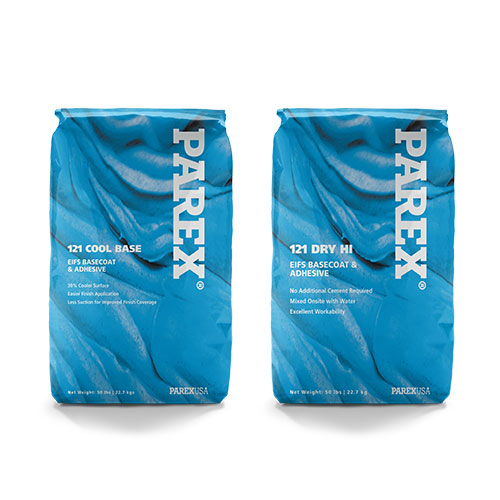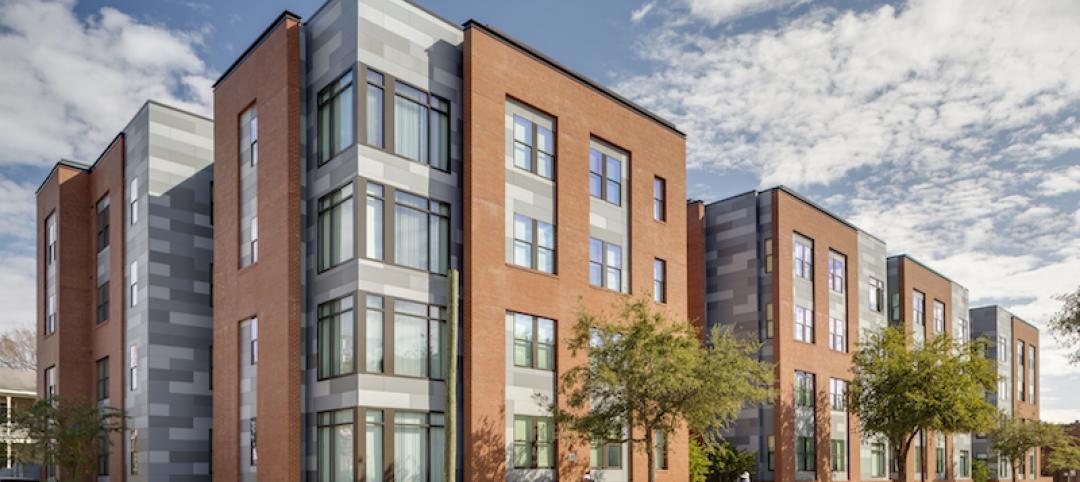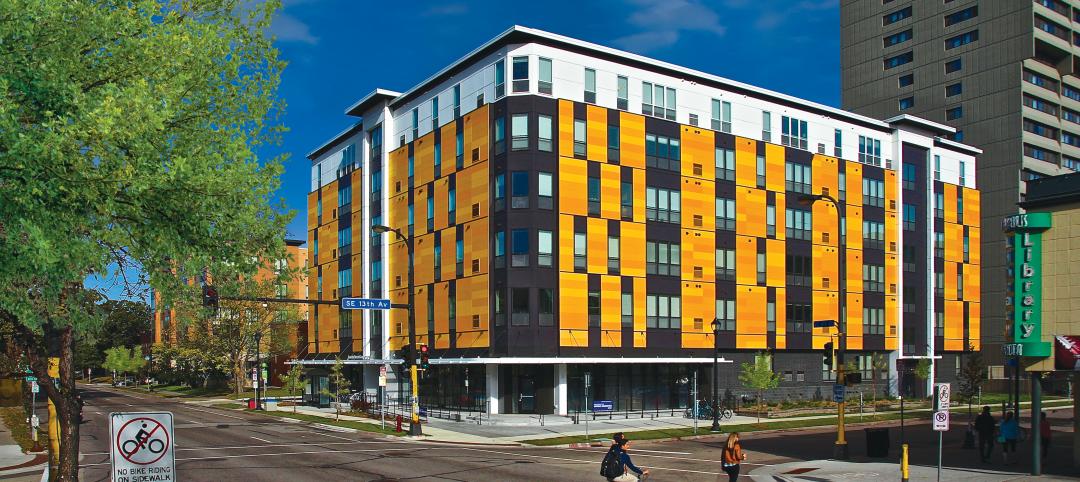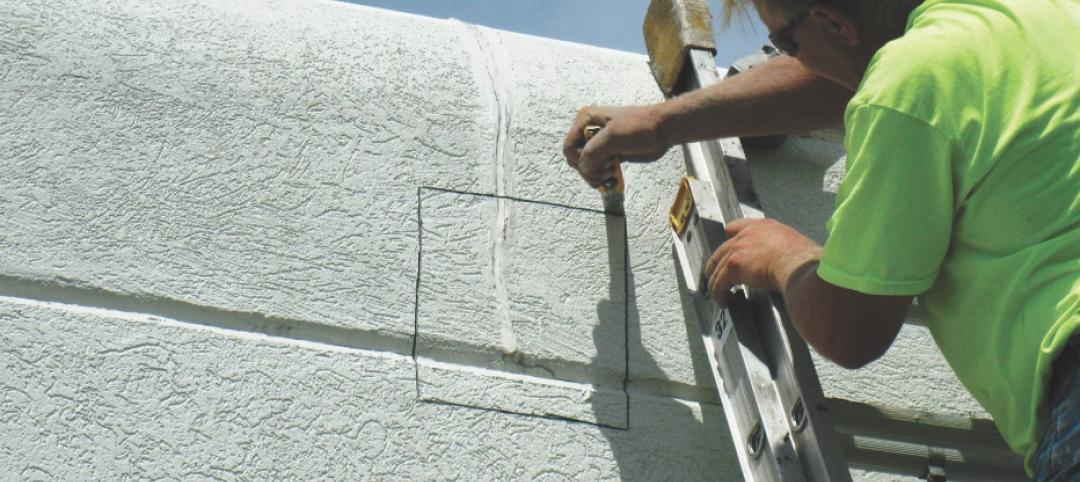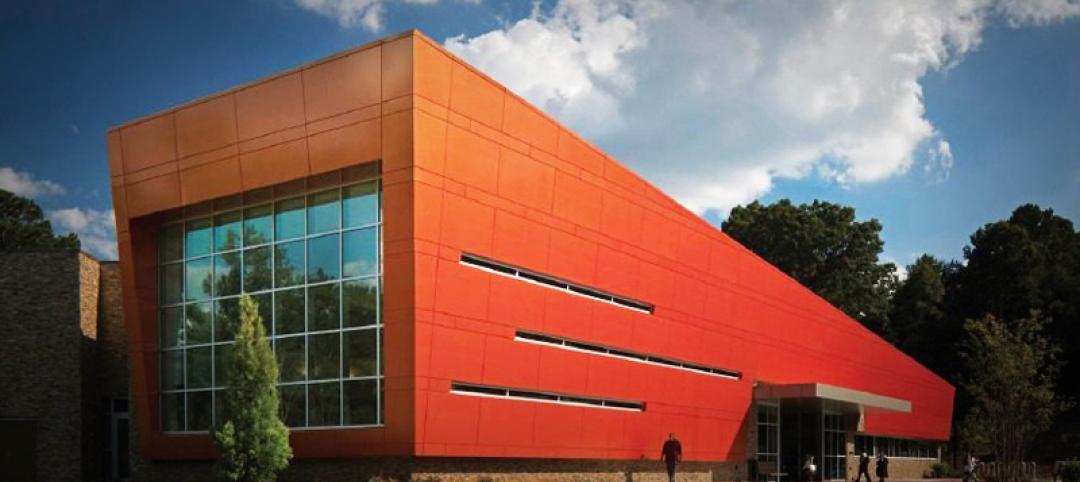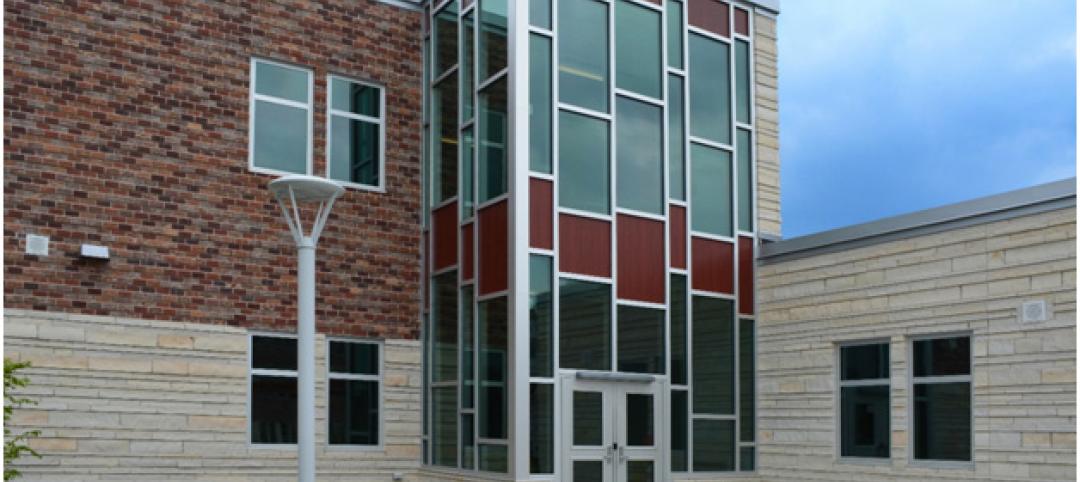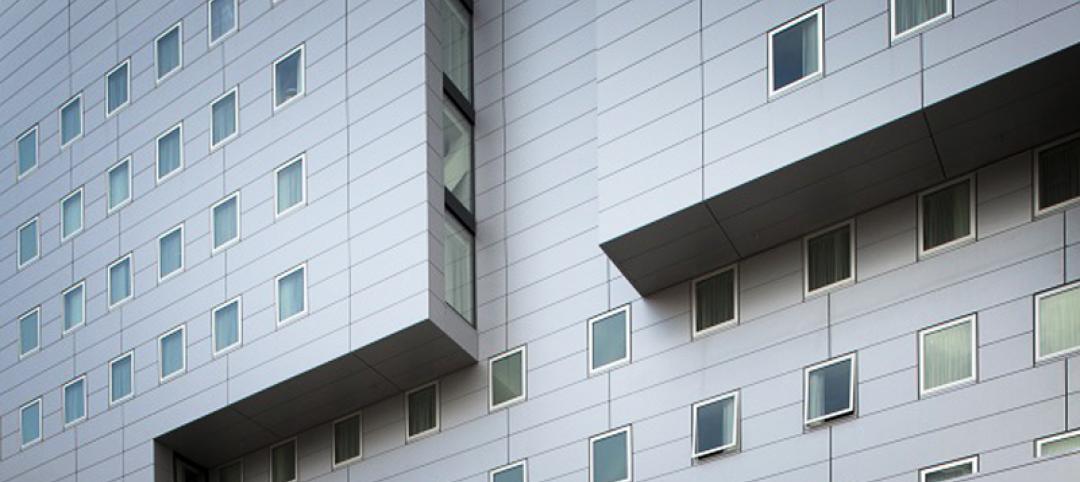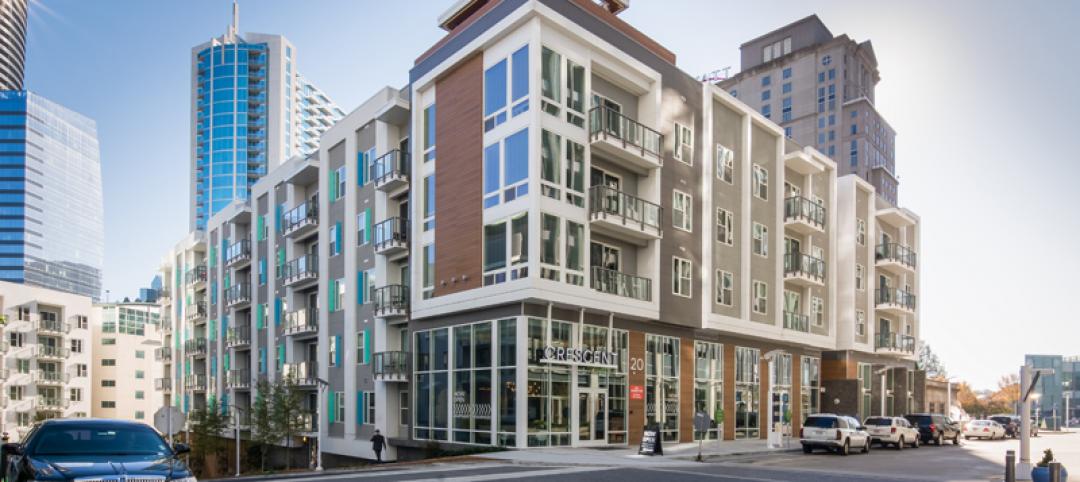Parex USA, Inc., the parent company of leading building material brands; Parex, Teifs, LaHabra, El Rey, and Merkrete, unveils two new Parex EIFS basecoats & adhesives – 121 Cool Base and 121 Dry HI (High Impact). Designed with the contractor in mind, the two new products boast extreme coolness and unsurpassed strength.
121 Cool Base is a premium, white EIFS basecoat and adhesive that is incomparable in the industry. It produces a 30 percent cooler basecoat temperature than typical basecoats & adhesives, which results in less suction and hydration when a final finish is applied. This technology allows for improved finish coverage as well as a faster and easier finish application.
“With the potential of improved finish coverage and ease of finish application, Parex’s new 121 Cool Base is set to make a big impact in the market,” said Heidi Larsen, Parex USA Product Manager. “When we presented a sneak peak of this product to contractors during our annual meeting, it was received with enthusiasm and overwhelming interest. Everyone was amazed at the drastic temperature differences between 121 Cool Base and standard EIFS basecoats & adhesives.”
Parex also introduces 121 Dry HI – a high performance EIFS basecoat and adhesive that is fortified with a unique blend of raw materials for increased impact and puncture resistance. It yields up to 30 percent better impact resistance (compared to standard EIFS basecoats & adhesives). 121 Dry HI is formulated for enhanced workability and provides easier application. This product is ideal for ground floors and other areas where greater impact resistance is required.
“In addition to providing 30 percent more impact resistance, 121 Dry HI also helps achieve higher ASTM/EIMA impact classifications,” said Larsen. “Typically, to achieve a “High” impact classification, a High Impact mesh (15 oz.) plus an additional layer of Standard Mesh (4.5 oz.) is required. Now, you can achieve a “High” impact classification utilizing a single layer of Intermediate Mesh (12 oz.) embedded in 121 Dry HI.” This system greatly reduces material and labor costs.
121 Cool Base and 121 Dry HI are one-component, polymer-modified, cement based dry products that are used as an adhesive to adhere EPS boards to existing substrates, a basecoat to embed reinforcing mesh and a leveler in Parex EIF Systems. Both 121 Cool Base and 121 Dry HI are shipped in 50 pound bags. Coverage, mixing instructions and limitations can be found in the Product Data Sheet at www.parex.com.
Related Stories
Sponsored | Cladding and Facade Systems | Sep 15, 2016
Healing has a new home: Parkland Hospital
ALPOLIC® materials contribute to a life-affirming experience.
Sponsored | Cladding and Facade Systems | Apr 13, 2016
Illumination panels offered a fresh solution for new student housing development in historic Charleston, S.C.
The 40-unit apartment building features a checkerboard design with three shades of gray to provide a contemporary façade without betraying the historical setting
Sponsored | Cladding and Facade Systems | Mar 29, 2016
Illumination provides unique solution for university housing development
Nichiha Illumination panels were used to create a dynamic housing development for University of Minnesota students. When it came time to design the multi-story building, the architect was not wanting just any shade of yellow, but looking for a particular yellow he had in mind. Illumination’s custom color capability proved to be the best solution as it provided him with precisely the yellow he was looking for.
| Jan 14, 2016
How to succeed with EIFS: exterior insulation and finish systems
This AIA CES Discovery course discusses the six elements of an EIFS wall assembly; common EIFS failures and how to prevent them; and EIFS and sustainability.
Sponsored | Cladding and Facade Systems | Dec 7, 2015
The Wolf Creek Library: ALPOLIC® Materials welcomes a community to its new “living room"
An expansive glass curtain wall frames the forest and lake behind the building, bringing the outside in.
Sponsored | Cladding and Facade Systems | Oct 27, 2015
The 'new' Gaillard Center gets a standing ovation for its exterior cladding
The “new construction” surrounds three sides of the original building, offering both a classic public structure and exquisite outdoor spaces.
Codes and Standards | Aug 6, 2015
AAMA updates methods for testing of exterior walls
The standard specifies test methods, specifications, and field checks to evaluate structural adequacy of exterior wall systems composed of curtain walls, storefronts, and sloped glazing.
Sponsored | Building Enclosure Systems | Jul 20, 2015
Fire Rated Curtain Wall Performance in Dramatic Weather Conditions
Materials selected for the building envelope had to protect occupants from Wisconsin's weather, as well as ensuring their comfort.
Sponsored | Coatings | Jun 5, 2015
Unwrapping ‘the mummy’: Chicago hotel project comes to life
The sleek architectural panels and Valspar coating give the building a steely sheen.
Sponsored | Cladding and Facade Systems | Apr 21, 2015
Nichiha adds distinctive edge to Atlanta luxury apartment building
The apartment building features a contemporary high-end design that meshes well with neighboring buildings and the community as a whole.


